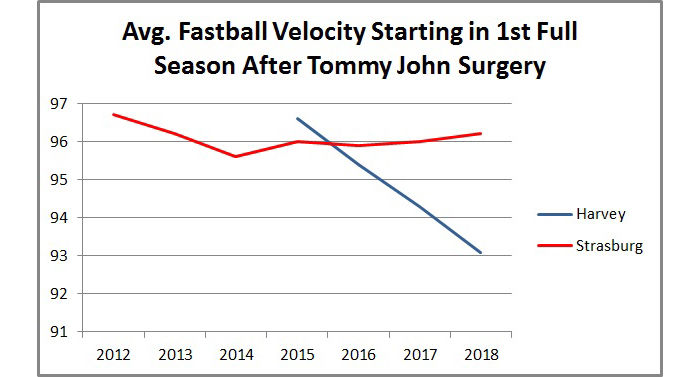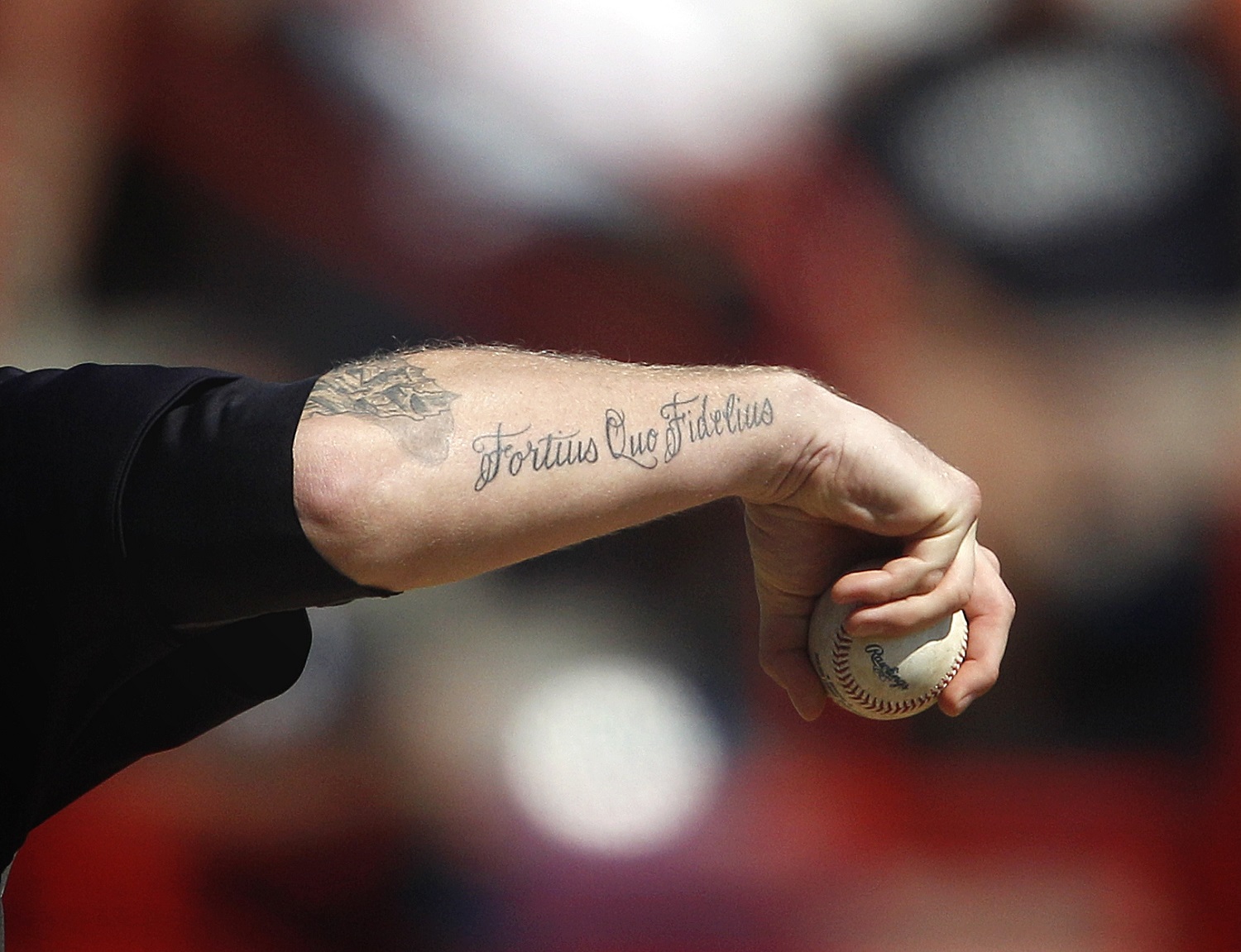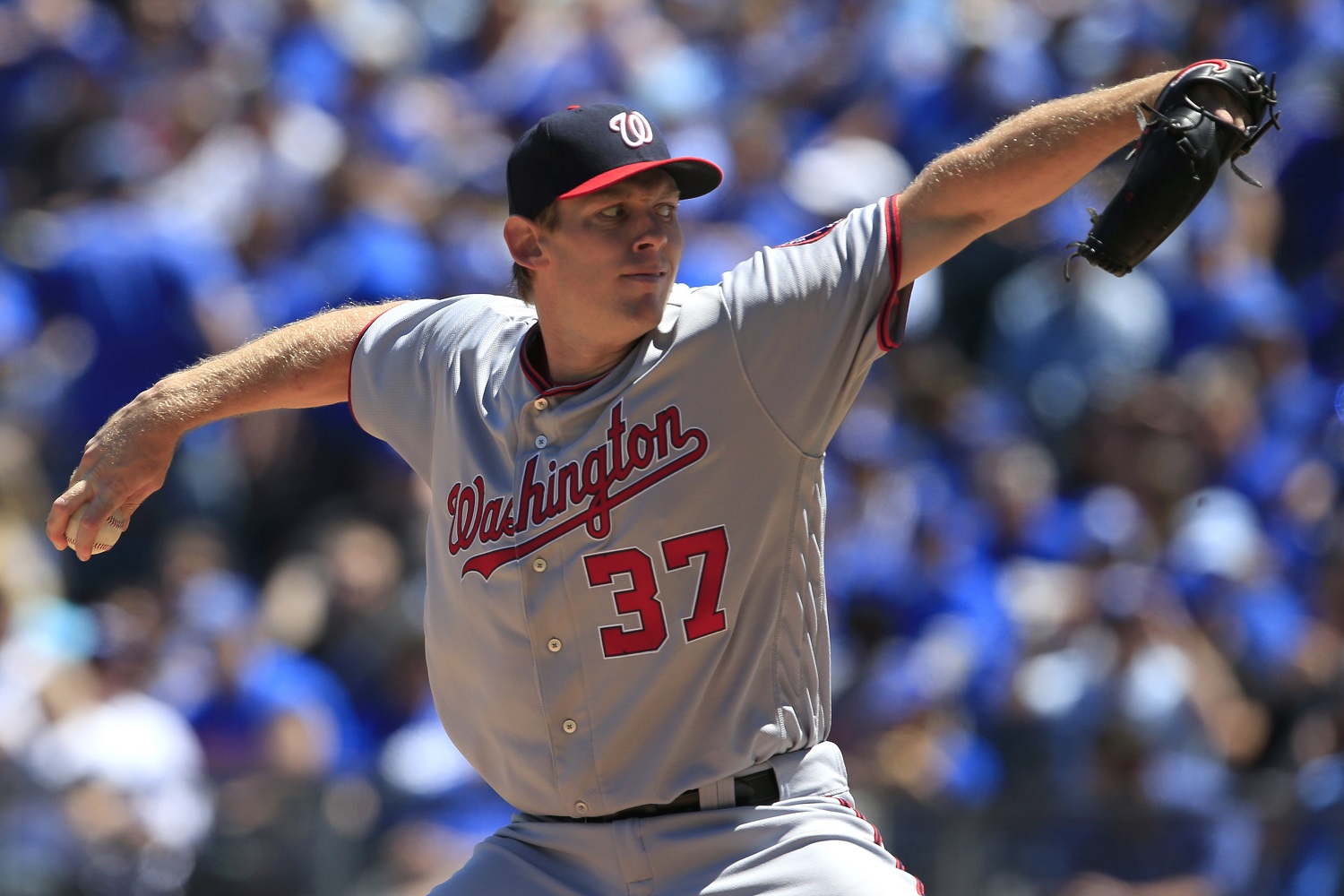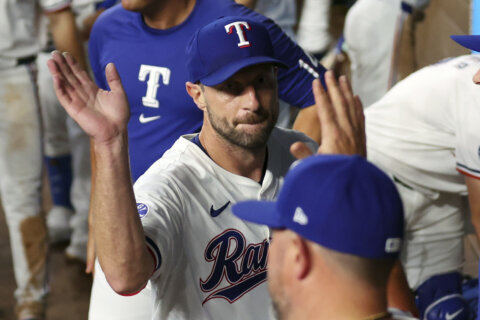WASHINGTON — On a cool, drizzly evening in Queens five years ago, the legend of Matt Harvey: Gotham’s savior, was truly born. Dueling head-to-head with Nationals ace Stephen Strasburg, the 24-year-old Mets phenom was electric, regularly gassing Washington hitters with high-90s heat, leading the charge as the New York Mets beat Strasburg and the Nats, 7-1.
But the moment that stuck came with Strasburg on the mound, as the game waned. The Citi Field crowd, unprompted, started to chant.
The words were clearer and louder in the press box that night than they are on the broadcast. They were unmistakable in their intent. “Har-vey’s Bet-ter (clap, clap, clap-clap-clap).” It was about more than just Harvey — it was about Strasburg, too, about the Dark Knight shining brighter than the former No. 1 overall pick.
Harvey allowed a single run while fanning seven over seven innings of work while Strasburg yielded four runs (two earned) over six frames. By the end of the night, Harvey stood at 4-0 with a 0.93 ERA, Strasburg at 1-3 with a 2.96 mark. The chant was bravado, but it was genuine, stirred up and driven and amplified solely by the fans in attendance that night. Being there in that moment, even on the other side, it was hard to argue against.
Strasburg and Harvey are the same age, each now 29, born just 250 days apart. Both had their starts become holidays for their respective fan bases, diehards wishing one another Merry Strasmas and a Happy Harvey Day. Beyond that, they don’t share much — the introverted, private, San Diego native pitching on the opposite side of the country from home, and the brash, celebrity-dating, hard partier from New London, Connecticut, just across the Long Island Sound from the far edge of the strip of land on which he’d launch to stardom.
But they share Scott Boras, who represents them both, and who binds them off the field forever.
The super-agent and the Nationals brass famously — or infamously, depending on your view — set an agreed-upon innings limit for Strasburg in his return to the mound in 2012 following Tommy John surgery. After a shaky start on September 7, sitting at 159.1 innings, they pulled the plug. The Nats won the division to earn their first postseason appearance since relocating to Washington, but were bounced in a heartbreaking five games in the first round of the playoffs, a point they have yet to advance beyond five years later.
Similarly, Boras requested Harvey’s innings be limited to 180 in his first season back from Tommy John in 2015. Harvey threw 189.1 frames in the regular season, then another 26.2 in the playoffs, running his total to 216 for the year.
When the Mets made it to the World Series in 2015, as the Nats sat at home, Harvey tried to play the hero. Facing elimination, after throwing eight scoreless frames, he demanded the ball for the ninth. New York lost the game and the series to the Royals in extra innings.
It’s impossible to say whether or not that extra stress was the culprit, whether Harvey might have stayed healthier if limited or would have broken down anyway. All we know is that he’s never been the same since.
***
If Washington is an “event” sports town that only shows up if something is deemed popular enough by the masses, New York is its inverse. This isn’t to say New Yorkers are better sports fans — it’s just that every little detail, no matter how crucial or insignificant, is amplified into life-or-death levels of consequence, screamed about in tabloids and talk radio, chewed up and spat back out as an unrecognizable wad of whatever it was at the beginning. In D.C., Max Scherzer winning back-to-back Cy Young Awards might bring a half-hearted argument about whether he was the second or third most popular player on the team, but only once the Caps’ season ends. In New York, the only argument would be over who should give the speech at the statue dedication.
All of this is to say that to debate whether or not Strasburg is actually better is to miss the point. After surgery, Strasburg learned to dominate without fans glancing to the radar gun after every pop of the mitt in a way that Harvey never did. Strasburg has never been back within a mile-per-hour of his average fastball velocity in 2010 (97.9), sitting between 95.9-96.7 in the years since. That’s still great, but his changeup has become his most valuable offering as he has matured and progressed as a pitcher.

Among active pitchers, Strasburg is fourth in adjusted ERA (ERA+), trailing only Clayton Kershaw, Chris Sale, and Corey Kluber (sitting just ahead of Max Scherzer). Strasburg trails only Sale and Randy Johnson in strikeout rate all-time in the history of the game, fanning 10.5 per nine innings. As Harvey’s career has fallen apart over the past three seasons, Strasburg has continued to motor along, working through minor injuries, but avoiding major ones. His average season over the last six years since his return to the rotation in 2012 through 2017: 168 innings pitched, a 3.12 ERA, 1.09 WHIP, 44 walks and 195 strikeouts.
Harvey, meanwhile, sputtered even more spectacularly than he rose. In his 44 appearances since the World Series, he went 9-19 with a 5.93 ERA and a 1.58 WHIP. His walks went up, his strikeouts down. After allowing 30 home runs in his first 427 innings as a big leaguer, he gave up 35 in his last 212.1 frames.
In the end, Harvey resembled the Dark Knight himself less than he did Harvey Dent, Gotham’s shining hope-turned-villain who fell from grace. As Dent said in The Dark Knight, “You either die a hero or you live long enough to see yourself become the villain.” Harvey was booed off the mound in his final Citi Field appearance, after allowing five runs in two innings out of the bullpen.
Strasburg and the Nationals still haven’t delivered a title, and Nats fans may not celebrate Strasmas nearly as heartily as they once might have. But Strasburg will take the hill Monday night, back at home in San Diego, the same as he has done at least 23 times each year since 2012.
Two years ago, I asked Yahoo! baseball writer and author of “The Arm” Jeff Passan if Strasburg’s relatively injury free post-Tommy John career was vindication for his 2012 shutdown.
“Honestly, no, I don’t think that we can say definitively that the shutdown worked,” said Passan. “Because we’ll never know. Stephen Strasburg could have pitched all the way through the end of the season like Matt Harvey did (in 2015) and stayed completely healthy.”
Then, forebodingly, he offered the following.
“And if Matt Harvey gets hurt, I don’t think it will be fair to go and blame it on him going out and pitching more (in 2015). That’s the problem. We just don’t know still. And, we don’t have any of those definitive markers. We don’t have any sort of way to capture data that might tell us whether there was extra strain and stress on his elbow — in (Matt) Harvey’s case during October (2015) that Strasburg might not have seen.”
That’s true today — we still don’t know. These are a pair of anecdotal cases, the smallest possible sample to measure. Until we reach an age of collectively bargained shared biometric data, we simply won’t be able to say anything definitively about any such injury and recovery. But until that day comes, players, agents and front offices everywhere dealing with an ace on the mend will look at the stories of Strasburg and Harvey when deciding what to do next.







